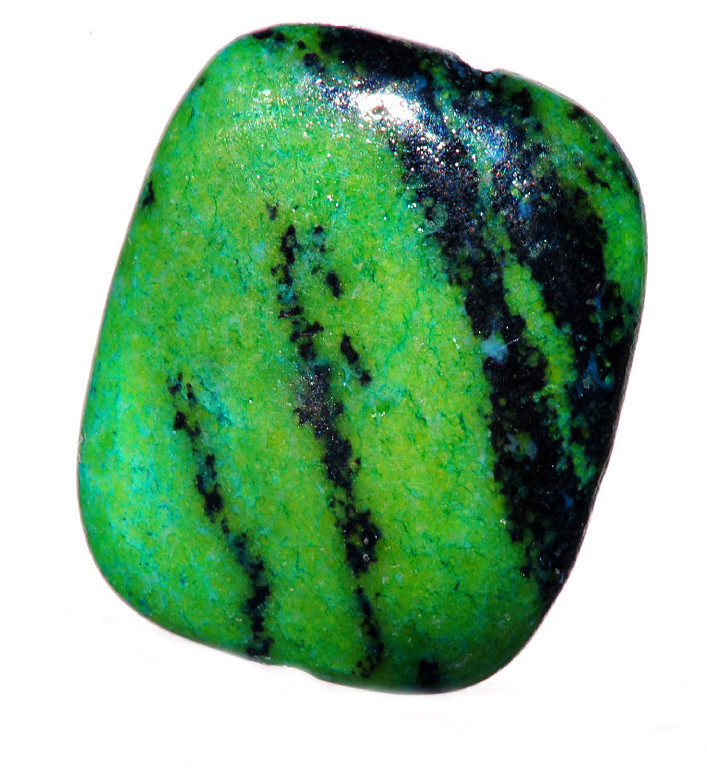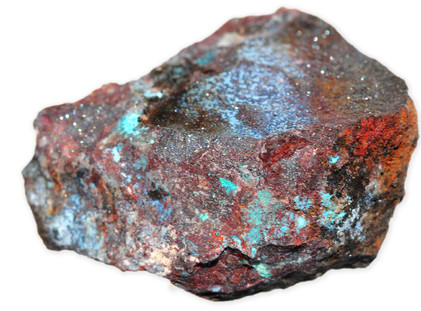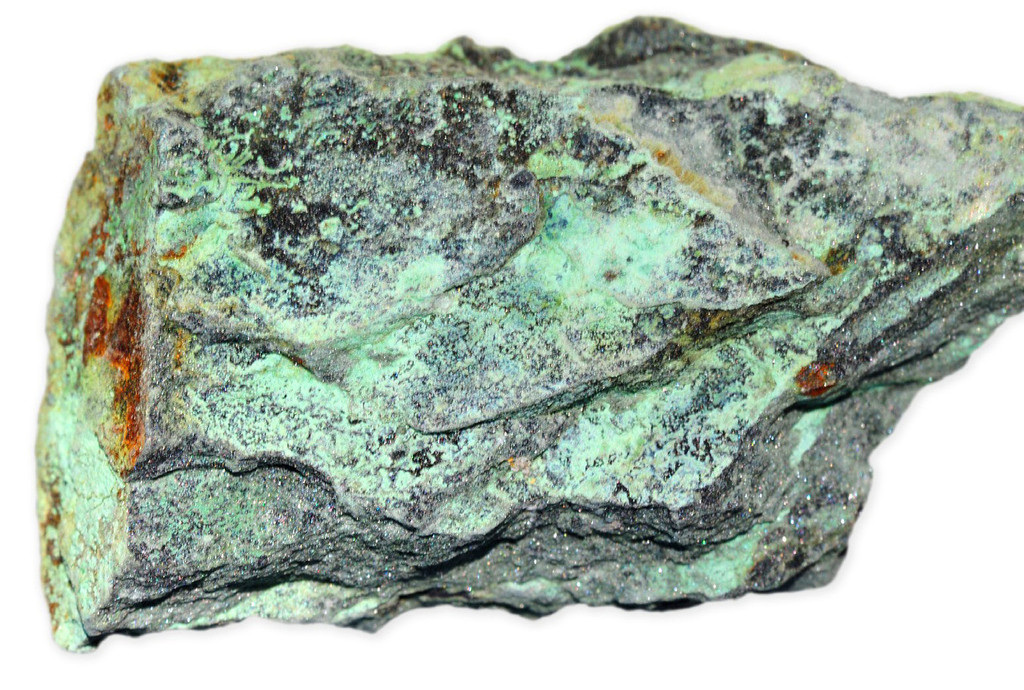|
| Name Origin | In Greek Chrysos means golden and kolla means glue. This name was applied to a material used by the Greeks in soldering metals. Eilat Stone takes its name from Eilat, Gulf of Aqaba, Red Sea. |
|---|---|
| Chemical Formula | (Cu, Al)2 H2Si2O5(OH)4.H2O |
| Color | Blue, green, and blue-green in various shades. Mixed with matrix of quartz and oxides of Cu, Fe, and Mn, adding brown and black colors. |
| Occurrence |
In the oxidized zone of copper deposits. Maybe mixed with copper carbonates such as malachite and turquoise. |
| Hardness | 2 - 4 on Mohs Scale |
| Crystal System | Monoclinic. Crystals are microscopic, in aggregates; cryptocrystalline, opalline. |
| Cleavage | None. Fracture uneven to conchoidal. Very brittle |
| Specific Gravity (SG) | 1.9 - 2.4 |
| Luster | Vitreous (if silicified). waxy, dull |
| Stone size |
Large masses of material, weighing several pounds, have been found |
| Streak |
white to a blue-green color |
| Pleochroism | None |
Note: Chrysocolla often forms as a gel mixed with silica and hardens to a blue material that is basically a chrysocolla-saturated quartz. This material is very hard (7 on Moh's scale), wears well, and is often seen in jewelry. Chrysocolla mixed with malachite is often sold as Eilat Stone and comes from many localities; the color is blue to blue green. Stellarite us the trade name for a light blue mixture chrysocolla and quartz. Parrot-wing is a mixture of chrysocolla and jasper with brownish green color.
Read more about other color stones
Adamite
Amber
Algodonite
Andalusite
Amblygonite
Aragonite
Azurite
Barite
Tanzanite
Crocoite
Gaylussite
Hauyne
Magnesite
Inderite
Crodierite
Hauyne
Inderite
Topaz
Adamite
Amber
Algodonite
Andalusite
Amblygonite
Aragonite
Azurite
Barite
Tanzanite
Crocoite
Gaylussite
Hauyne
Magnesite
Inderite
Crodierite
Hauyne
Inderite
Topaz
Reference: Color Encyclopedia of Gemstones, Joel E. Arem, VNR publications, New York.
Photo Credit: www.shutterstone.com
Photo Credit: www.shutterstone.com



